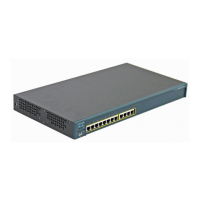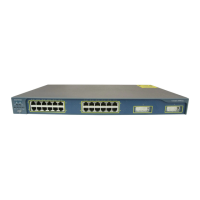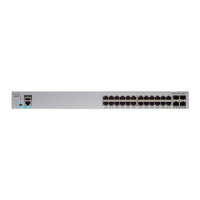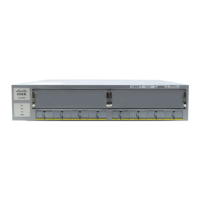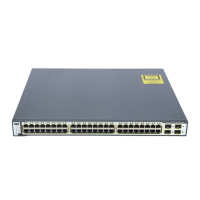Contents
x
Catalyst 4500 Series, Catalyst 2948G, Catalyst 2948G-GE-TX, and Catalyst 2980G Switches Software Configuration Guide—Release 8.2GLX
78-15908-01
Deleting a VLAN 10-12
Configuring Auxiliary VLANs 10-13
Understanding Auxiliary VLANs 10-13
Configuring Private VLANs 10-16
Private VLAN Configuration Guidelines 10-17
Creating a Private VLAN 10-19
Viewing the Port Capability of a Private VLAN Port 10-22
Deleting a Private VLAN 10-22
Deleting an Isolated or Community VLAN 10-23
Deleting a Private VLAN Mapping 10-23
CHAPTER
11 Configuring VLAN Trunks on Fast Ethernet and Gigabit Ethernet Ports 11-1
Understanding How VLAN Trunks Work 11-1
Trunking Overview 11-1
Trunking Modes and Encapsulation Types 11-2
Trunking Support 11-3
802.1Q Trunk Restrictions 11-4
Default Trunk Configuration 11-5
Configuring a Trunk Link 11-5
Configuring an 802.1Q Trunk 11-5
Defining the Allowed VLANs on a Trunk 11-6
Disabling a Trunk Port 11-7
Disabling VLAN 1 on a Trunk Link 11-8
Example VLAN Trunk Configurations 11-9
802.1Q Trunk over a Gigabit EtherChannel Link Example 11-9
Load-Sharing VLAN Traffic over Parallel Trunks Example 11-13
802.1Q Nonegotiate Trunk Configuration Example 11-19
CHAPTER
12 Configuring Dynamic VLAN Membership with VMPS 12-1
Understanding How VMPS Works 12-1
VMPS and Dynamic Port Hardware and Software Requirements 12-2
Default VMPS and Dynamic Port Configuration 12-2
Configuration Guidelines for Dynamic Ports and VMPS 12-3
Configuring VMPS 12-4
Creating the VMPS Database 12-4
Configuring the VMPS Server 12-7
Configuring VMPS Clients 12-7
Monitoring VMPS 12-9

